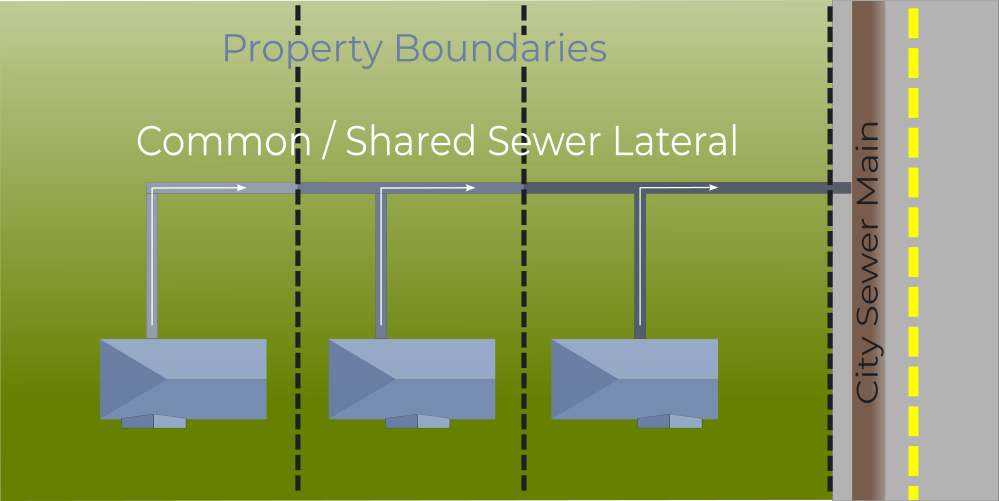
Sometimes neighbors share utility spaces underneath their properties, and it’s not always a welcomed realization. By law, an easement is a right to cross or otherwise use someone else’s land for a specified purpose; and lots can get lost in the translation of this law when it comes to property lines, neighbors, and the cost to resolve issues related to it.
To complicate matters, utility easements can bring even more challenges as they are defined as areas of a property that were defined for use by utility companies when the property was first put on a plot. They are designated for overhead or underground electric, telephone, television, water, sewer, and cable lines. But what does all of this mean when it comes to issues like sewer line repair, home improvement, and relations with your neighbors?

Utility Easements and Neighbor Relations
Because of the nature of ownership and all it can provoke in peoples’ experience, utility easements can cause tension between neighbors or add weight to an already stressed relationship. Pipe Spy is knowledgeable in helping our customers to “ease” tensions and solve complicated logistics shared between property owners. Complicated situations where one property’s sewer lateral leaves the private property may need a real estate lawyer to legally resolve.
Pipe Spy helps guide our customers through, what could be, a complicated process by educating and bringing awareness to homeowners/buyers. Some of the key details are:
- Easements are typically recorded; so, if there is an agreement on the easement, it should be in the paperwork for the home when you purchase it. Title insurers must divulge this information to you before you agree to purchase the home. Not disclosing this information could have legal consequences.
- Approaching neighbors, even if you have a legally binding easement, should be a respectful venture. You always want to share the historical facts while asking for your neighbors’ blessing. This ensures a congenial and earnest relationship when you’re seeking to gain approval for any work you want to do in that area of the property.
- There are two types of easements: public and private. Public easement inquiries can be answered and resolved by your local city jurisdiction. Private easements can be a bit tricky and can take a lot more finesse and patience. These negotiations or requests must be worked out between neighbors.
- You can’t identify a true easement just by looking at a property; you really must research the home documents and do a physical survey of the parcel to find out about it. A video inspection of the sewer line could also help you locate the sewer to find out if it crosses the easement before you consider repair or replacement work to be estimated.
How Are the Terms of a Utility Easement Determined?
While real estate law is complicated and varies from property to property, the terms of a utility easement may have less to do with property lines and everything to do with the history of a property. Possible grandfathered easements, which property was built first (or order of seniority), and other attributes that determine an easement’s legitimacy. Subdivisions or sections made after the original or first build can also be a major consideration.
All in all, finding out about an easement on your property can be better than not knowing one exists. You’ll have more information and be empowered to make the best decisions when considering updates and repairs to your home.
For more information on easements as it relates to repair of your underground utilities; or to have your sewer located and inspected, give us call at Pipe Spy.
